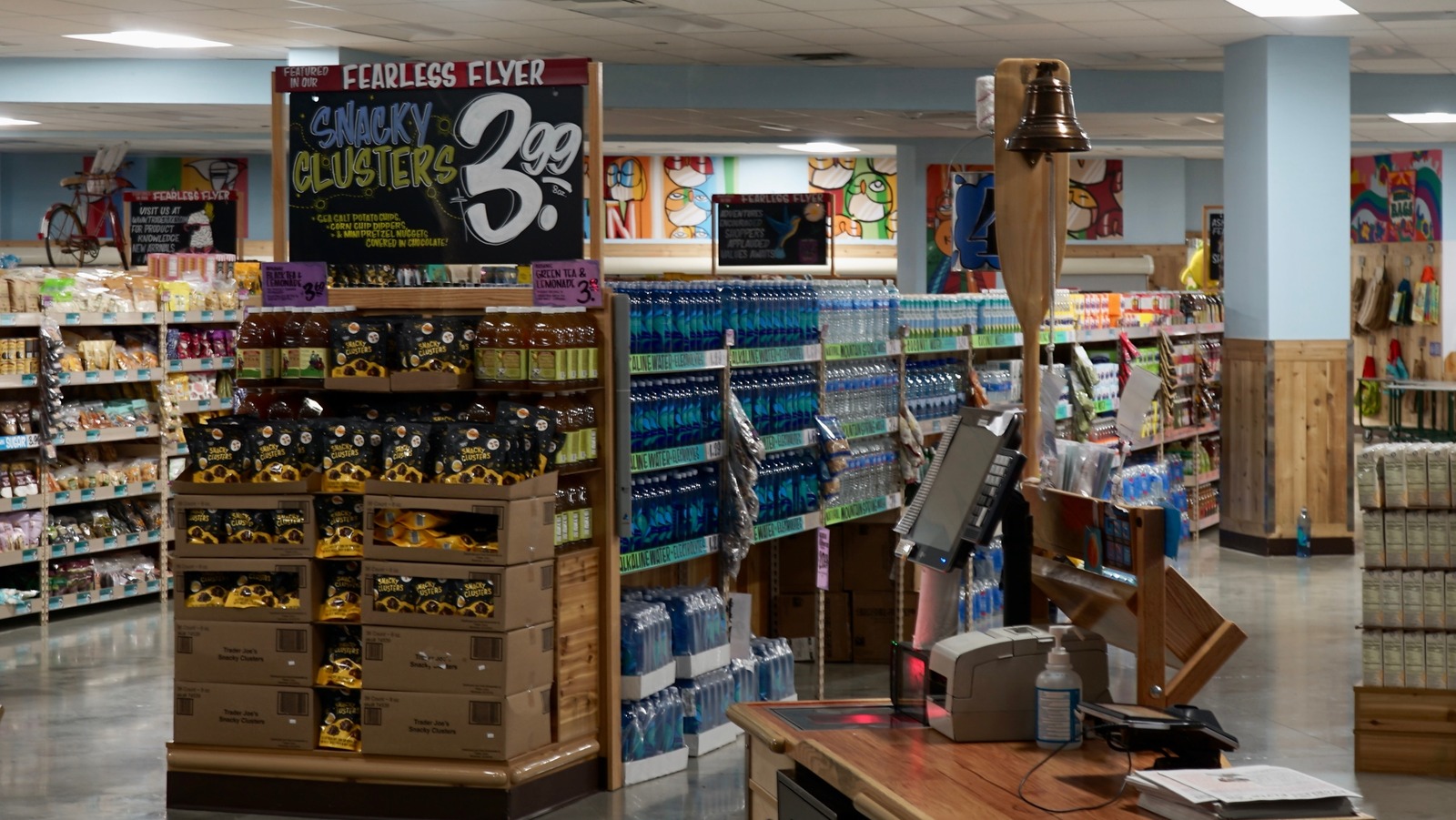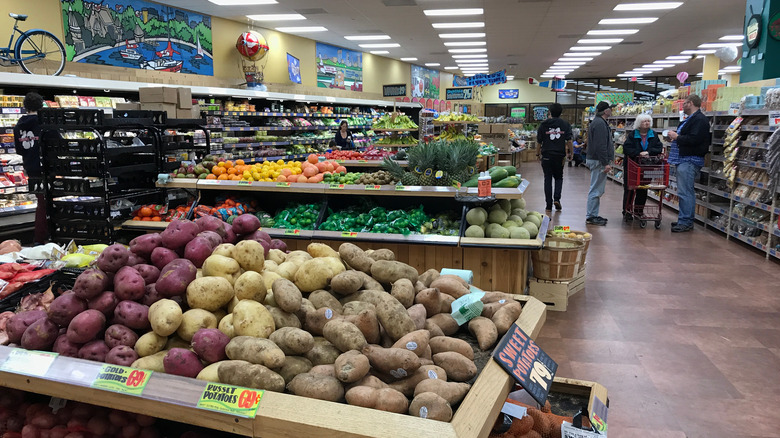Supermarkets generally have a standard layout: produce department to the front, at one side; the bakery to the front on the other side; the meat department in the back; milk and dairy along the perimeter; packaged foods, beverages, and household products in the center. Sure, aisles change from store to store and finding what you need can be a challenge. Still, if you shop at a specific chain, you can expect to see nearly identical layouts at every location. Except, if your store of choice is Trader Joe’s. Nothing about its layout is standard, which is one of those mildly annoying aspects of shopping at Trader Joe’s stores.
Shopping at Trader Joe’s can often feel more like a treasure hunt than a food shopping expedition, not just because it secretly hides a stuffed animal in stores for kids to find (which is probably one of the Trader Joe’s secrets you wish you knew earlier). You’ll probably never hear an announcement saying “Clean-up in aisle four” at Trader Joe’s because the chain doesn’t have public address systems — it uses bell rings instead — but also because there is no aisle four. Or five. The key thing to know about the Trader Joe’s layout is that aisles are not numbered, nor are there signs indicating what can be found in each aisle. Certainly don’t expect to find the same layout store to store. And, if you think going to the same location over and over will help you learn the layout, don’t be surprised if you stop by one day and find your favorite items have been moved to another section.
Inconsistent by design
Keeping the stores’ looks inconsistent is by design. Author of “The Art of Trader Joe’s” Julie Averbach told CNBC that the approach encourages shoppers to slow down and explore the store. “And once you slow down and enjoy, you’re also more likely to discover and buy things that weren’t on your original shopping list.”
Trader Joe’s can get away with turning a supermarket trip into a game of hide-and-seek in part because the stores are small — generally 8,000 to 12,000 square feet. The small size helps the stores feel less like large national grocery chains and more like neighborhood markets. The stores often use unique spaces, like former banks, to create eclectic interiors. The retailer’s senior director of construction and facilities Shane Morrison explained on Episode 80 of the “Inside Trader Joe’s” podcast, “We tend not to go into rectangular spaces, which keeps it fun and interesting.”
The store also wants you to interact with its store employees, which the store calls crew members, and ask them questions. “Build a Brand Like Trader Joe’s” author Mark Gardiner revealed in a blog post on The Drum, “Crew members are hired for their naturally extroverted, empathetic personalities.” In fact, he says, Trader Joe’s purposefully has crew members restock shelves during peak periods so shoppers have the opportunity to interact with them. So, the next time you bump into a Trader Joe’s crew member, ask them a question. You’re probably going to have one or two.


